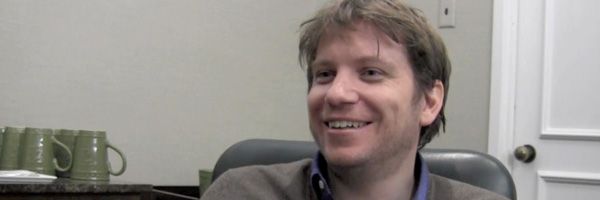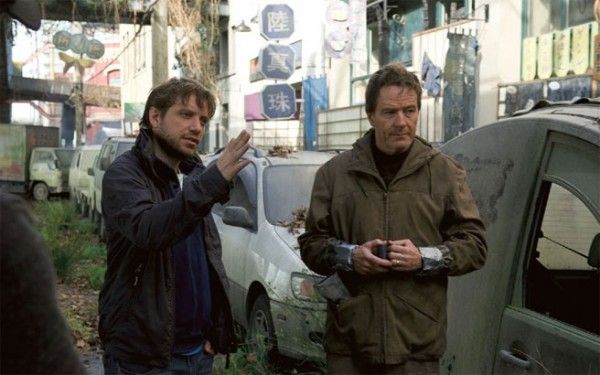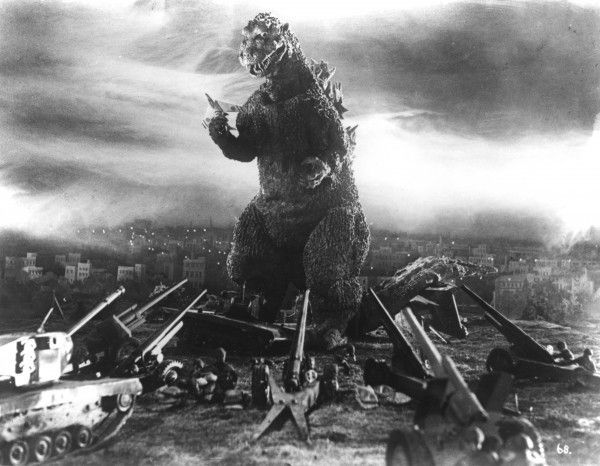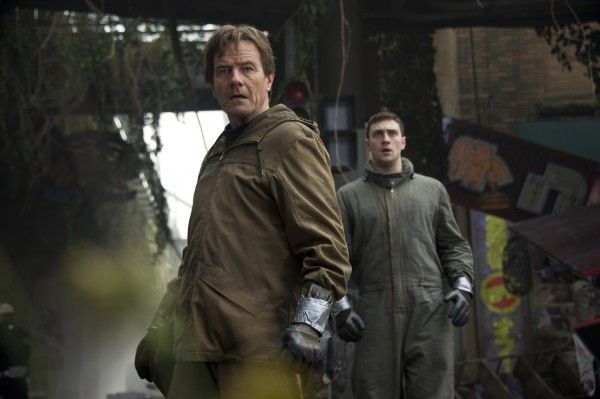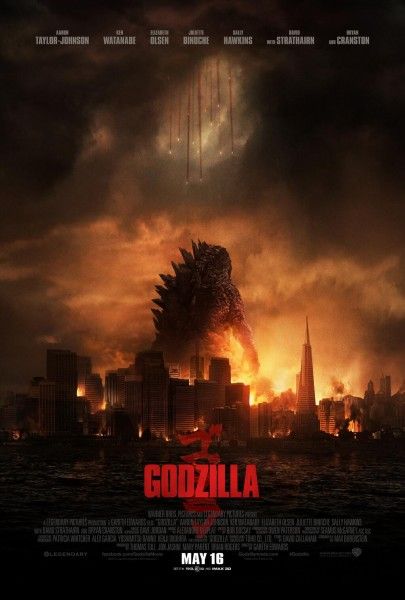It’s been over three years since Gareth Edwards first signed on to direct Godzilla, but based on the film’s promotional campaign thus far, it looks as though it was time well spent. The trailers have featured riveting performances, stunning visuals, and powerful builds, suggesting that Edwards may have achieved exactly what he set out to do from the moment he boarded the project – simply put, to deliver a good film.
Edwards is currently in Austin, Texas for SXSW where Legendary Pictures and Warner Bros. are holding a screening of the 1954 classic film, after which Edwards will take the stage for a Q&A. We got the chance to have a little time with the director one-on-one prior to the event and even though he did steer clear of spoilers, he was able to offer loads of insight on what we can expect come May 16, 2014. We discussed his monster’s origins, connecting his Godzilla to the existence of the Toho monster in the narrative, his personal distaste for post-credit scenes, the possibility of additional creatures, and loads more, and you can catch it all right after the jump.
Here's the time index and video of the interview. We've pulled some quotes and they're further down the page.
Gareth Edwards Time Index:
- 00:00 – His main goal with this film – ensuring it’s good.
- 01:21 – Starting with the nuclear blast idea and expanding the narrative from there.
- 03:09 – The importance of hitting dead ends while developing a script.
- 03:45 – The possibility of a sequel, but ensuring this is a standalone movie.
- 04:48 – The movie does not have a post credit scene.
- 05:15 – Addressing Godzilla’s origins in the film.
- 06:12 – Coming up with the monster design.
- 07:20 – Comparing the reveal of Godzilla to the creature reveal in Monsters.
- 08:42 – Directing techniques that carried over from Monsters to Godzilla.
- 10:12 – On working with his cast.
- 11:16 – Turning Godzilla into a character with layers.
- 11:33 – Whether or not there will be more than one monster.
Collider: Can you tell me a little bit about developing the story? I was watching the trailer commentary, and you mentioned that it all started with that nuclear blast, and it grew from there.
Gareth Edwards: Yeah, I was trying to find a hook that was, A) A nod to the original 1954 Godzilla, where Godzilla’s origins were from the nuclear tests in the Pacific, and also something that was realistic. The problem with doing anything like this, especially Godzilla, if it’s an origin story, how on Earth can a giant creature like this suddenly appear? How come we didn’t know about him? That’s impossible. So the obvious solution was, well, what if we do know about him? What is parts of the government have always known and those nuclear tests in the Pacific weren’t tests; they were trying to kill it.
Those two things went *click* and we went, “Okay, that could work,” and we pitched it to the studio and they’re like, “Yeah, that’s good. Let’s do that. Where does it go from there?” And then the next year was, mainly with Max Borenstein, was bouncing around ideas trying to land on something. It was a very trial-and-error thing. I’d love to say we had the idea straight away, but we tried all sorts of things and things would start to click into place until, finally, a year and a half into it, we had something that we felt good about and the studio felt good about, and it timed perfectly with this Comic-Con piece we did that we took to San Diego. The reaction was so good from the crowd that it got greenlit. Before I knew it, I had to fly to Canada and we started filming.
Is there an example you can give of an idea you came up with that didn’t make it into the film?
Edwards: No, because anything that I really liked that didn’t quite end up in this film, I keep it in my pocket if there’s ever a sequel.
Do you feel the pressure to keep the door open for one?
Edwards: I don’t want to assume that there’s a sequel at all, because it all depends on if people like the movie. The thing that was good about working with everybody on this film was that it was like, no, this should be a standalone movie, this is something that should exist on its own. I roll my eyes when I go to the cinema and they do something at the end for the sequel. I want a story that begins and ends, and you leave on a high. That’s all we cared about when we were making this; just this film. If this film is good, the others can come, but let’s just pay attention to this and not get sidetracked by other things.
So we don’t have to sit through the credits and wait for something in the end?
Edwards: There’s no … I don’t know what they call it. They have stupid terms for these things, like “button”? I know these terms now. There’s no “button” at the end of this film. I had a little campaign that we weren’t going to do that. It should just be a movie on its own. And if there’s another film ever, that should be on its own as well. All my favorite sequels and originals, films that got it right, exist on their own.
You said that the nuclear tests are trying to kill the creature, so does that mean that one of the big points you came up with is an origin?
Edwards: In the film we address that question. I don’t want to go into it too much, but there’s … How all this craziness in the film happens is explained. Hopefully you leave with some questions, because I think it’s fun to try and connect dots and work out backstory. There’s a lot of things that didn’t end up in the movie, ideas that I wanted to put in that just couldn’t fit. I think anyone should be able to leave the movie and know the origins of Godzilla.
How about the design? Did it change at all during production?
Edwards: No, I mean, it was a slow process. I thought, out of all the tests we’ve got to do, the easiest one by far is design Godzilla, because it’s done, right? You just do that. And then you’ve got to get that and try it and, hmm, it doesn’t look right. So the basic idea that I said to the designers was, “Okay, it’s a real animal. It really exists. We haven’t seen it in a long time, and the only people who saw it were just first-hand testimony. They ran to Toho Studios in Japan, and they tried to explain it and draw it, and then they went and made all their guys-in-suit movies based on this real animal.” We have to make something that feels real, that when you see it, it’s the coolest most realistic Godzilla, but you can look at the Toho movies and go, “Oh, I see. I see how you would have arrived at that design based on this if you glimpsed it in the ocean.”
How about Godzilla as a character? Is it just going to be a threat, or is there another layer somewhere?
Edwards: There might be another layer somewhere. It’s not black and white. I’ll put it that way.
Is he the sole monster in this movie?
Edwards: To allow you to put this out straight away, I’ll say, “I can’t say.”

